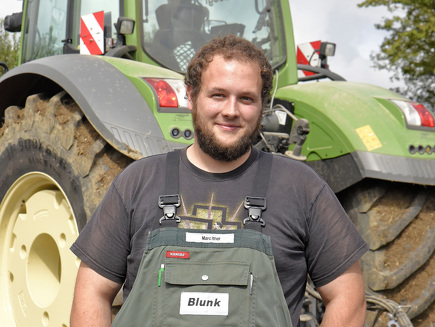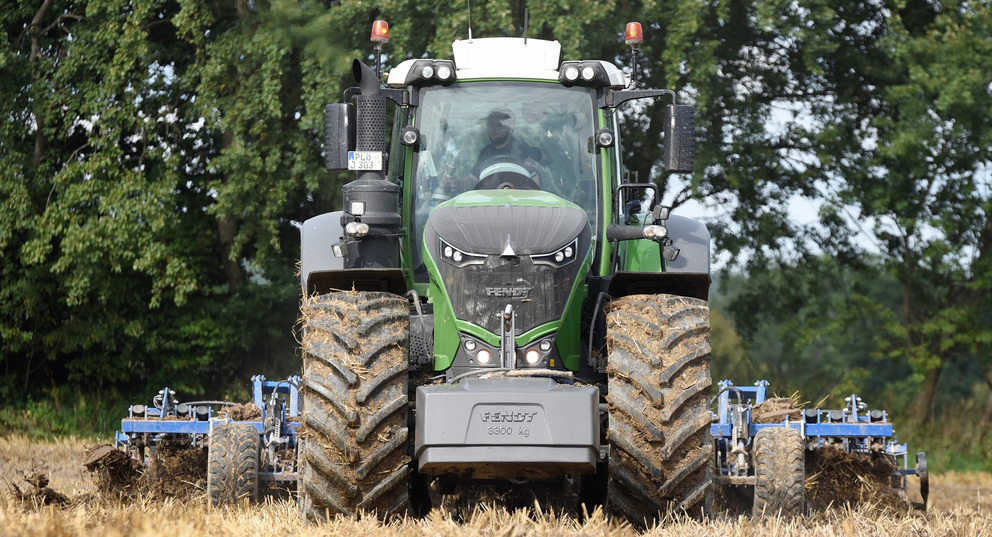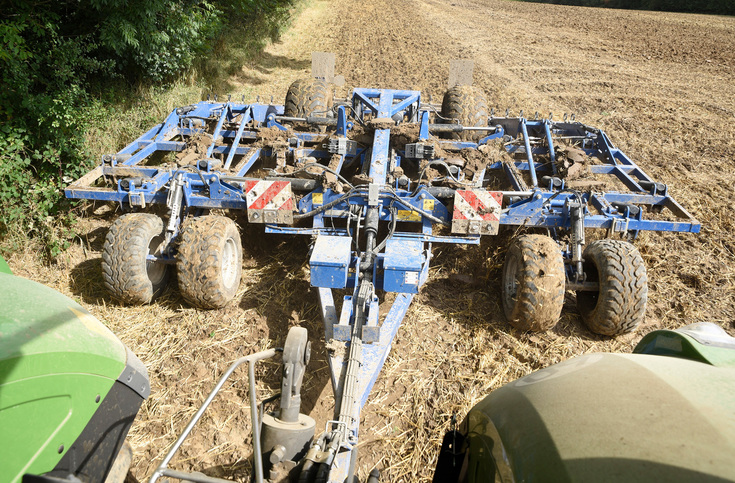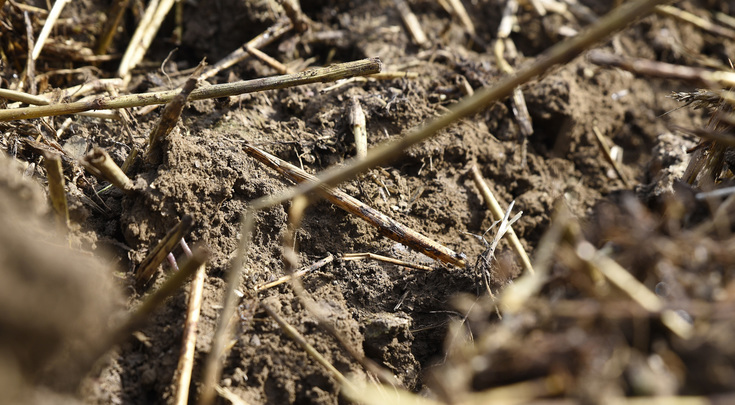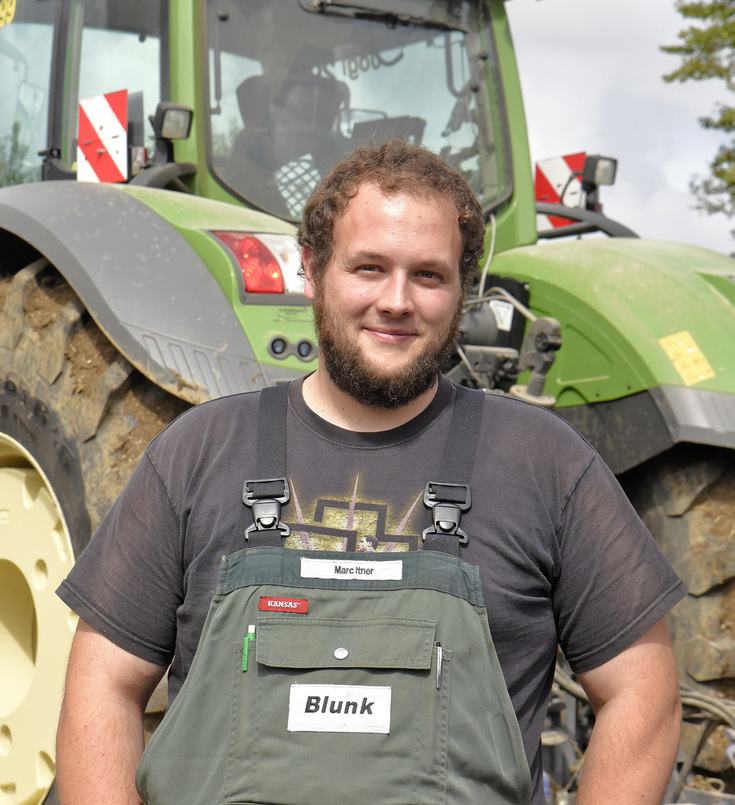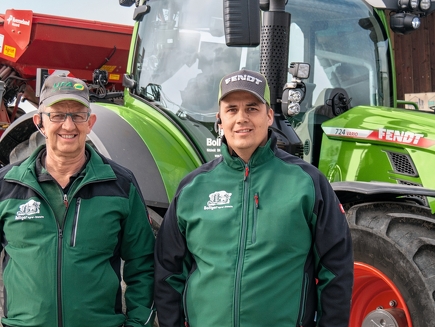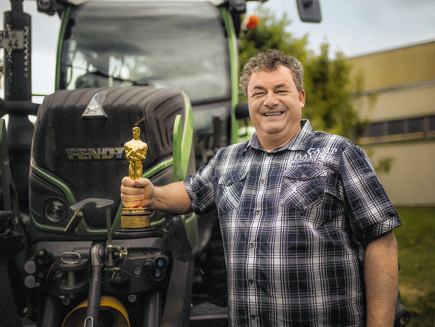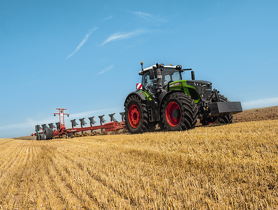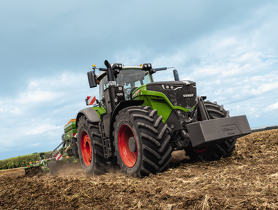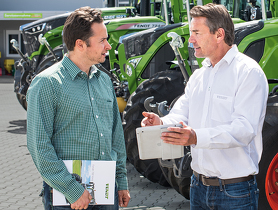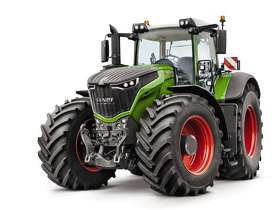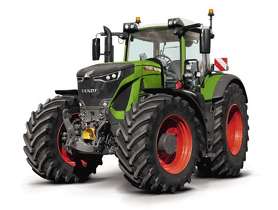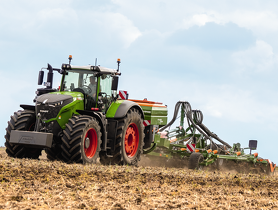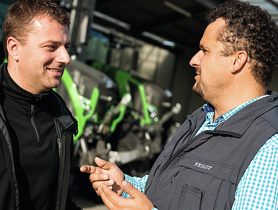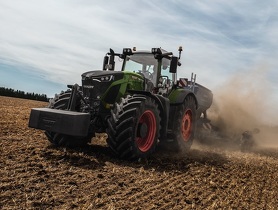The 1050-series cab is a bit more spacious compared to the 900-series Vario and at least feels quieter, which is probably also due to the engine's low-speed concept, he says: "The tractor may be slightly larger overall. Despite the massive bonnet, the field of vision is similar to the 900-series". The contracting firm employee is also happy with the number of storage compartments: "But the standard fridge compartment is slightly too small for us contractor drivers – we like to be on the go the whole day and only come back to the office in the evening. So, my colleagues and I put a large cooler on the right side of the cab".
He also likes the automatic control of the drive axles on the new tractor. "I no longer have to switch to the four-wheel. The tractor automatically controls the torque on both axles and shifts it variably. That makes it a very comfortable ride. And there's no changeover between the two groups, as with the smaller Vario series," he explains.
The driver stores the wear parts of the cultivator and the necessary tools in a box on the cultivator. "We have retrofitted many of the tractor's front weights with larger tool boxes. This gives us enough space for the most important materials and tools we need every day," adds Marc.
Today, after the cultivators, a catch crop is sown with a 6-m seed drill – drawn by a 936-series Fendt. The two trailers are well matched in their performance, says Marc: "I go slightly faster with the cultivator, so we're not under each other's feet in the fields".
He's usually on his own in his 500-hp tractor out in the Ostholstein fields and that's the way he likes it: "I like the way I can do so much of the work on my own. I set up the fields so I can work them as best as I can, without any hassle. And I get more done that way". He's always connected to his workmates on the radio and mobile phone, of course.

